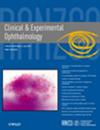Evaluating the Quality and Reliability of YouTube Videos on Optic Neuritis: A Cross-Sectional Study Using Validated Scoring Systems
Abstract
Background
YouTube is one of the largest internet platforms used worldwide. People often use this platform to get information. Since little is known about YouTube as a source of information on optic neuritis (ON), we investigated the quality, reliability and perception of ON videos related to content among YouTube users.
Methods
An online search was conducted on YouTube using the keyword ‘optic neuritis’. According to the inclusion and exclusion criteria, 50 videos were included in the study. All videos were evaluated based on likes, comments, views, view count, source of information and video content. The Journal of the American Medical Association (JAMA), DISCERN and Global Quality Scores (GQS) were independently evaluated by two ophthalmologists.
Results
This study analysed 50 YouTube videos with a total of 604 283 views. The mean scores for JAMA, GQS and DISCERN were 1.95 ± 0.43, 2.96 ± 1.21 and 41.59 ± 1.46, respectively. Videos created by physicians (46% ophthalmologists, 14% non-ophthalmologist physicians) had significantly higher JAMA and GQS scores (p < 0.05) compared to others; though no differences were observed in the DISCERN scores. Video metrics such as views, likes and comments did not show a significant association with quality scores.
Conclusions
The overall quality of the videos was suboptimal. Videos created by physicians demonstrated higher quality based on JAMA and GQS scores, highlighting the importance of expert authorship in online health content. The video metrics did not correlate with quality, highlighting the need for reliable evaluation criteria beyond the popularity measures.

 求助内容:
求助内容: 应助结果提醒方式:
应助结果提醒方式:


